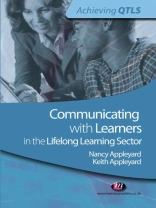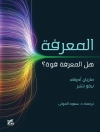Communication is a key theme of the QTLS Standards. This accessible book helps readers to understand the theories and principles that underpin effective communication and apply this theory to improve their communication with learners, colleagues and others in professional life. It examines the environment of educational settings and looks at how individuals themselves communicate with the sector. It gives detailed advice on communication skills and promoting a supporting learning environment. It goes on to include notes on communicating for specific teaching situations, inclusion and working with colleagues. Finally, it covers resources for communication and their adaptation for different situations.
Innehållsförteckning
Introduction
Communication theory: process, perception and interaction
Listening and speaking skills
Non-verbal communication, writing and reading skills
The human factor in communication
Communicating for inclusivity
Managing behaviour through communication
Communicating with large groups and with distance learners
Communicating within organisations
Communicating with colleagues
Resources
Om författaren
Nancy Appleyard has been teaching communication studies and personal development to a wide range of adults since 1994. Initially she worked as a tutor at Lincoln College teaching government funded programmes for returner to education. Since 2001 she has designed and developed more wide-ranging and flexible communication and personal development programmes within the FE sector and voluntary organisations.












